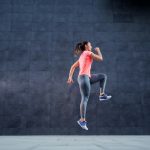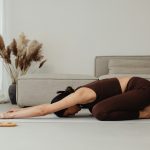Pilates Principles: DIY Home Routines for Core Strength and Flexibility
Pilates is a highly effective exercise form that targets core strength and flexibility, offering a path toward improved health and fitness. Whether you’re a seasoned practitioner or a beginner, integrating Pilates into your routine can be transformative. At home, simple DIY routines can help enhance core stability and overall body alignment, building a foundation for a healthier lifestyle.
Engaging in Pilates at home doesn’t require fancy equipment; a mat and commitment to consistency are often enough to see significant benefits. This practice not only helps in toning muscles but also improves posture and increases range of motion. By focusing on controlled movements and proper breathing, individuals can achieve a better connection between body and mind.
Developing a personalized Pilates routine can be an empowering journey. By understanding key principles of Pilates, anyone can design effective home workouts. These exercises cultivate strength and flexibility, contributing to improved physical and mental wellness. Whether aiming to boost athletic performance or to simply maintain a fit lifestyle, Pilates can be a cornerstone of a balanced fitness regimen.
Understanding Pilates
Pilates is a physical fitness system developed in the early 20th century that combines strengthening exercises with flexibility enhancement. This practice emphasizes core stability, posture, and overall well-being.
Origins and Philosophy
Pilates was created by Joseph Pilates, a German physical trainer, in the 1920s. Originally named “Contrology,” the method was designed to connect the mind and body through controlled movements. Joseph Pilates believed that mental and physical health are closely intertwined, which led him to focus on exercises that promote this balance.
The philosophy of Pilates is centered around controlled, precise movements performed with proper form. These movements aim to strengthen the body evenly, improve posture, enhance muscular control, and increase overall body awareness. Joseph Pilates incorporated elements of yoga, martial arts, and ancient Greek and Roman practices to create a comprehensive fitness system.
Key Principles of Pilates
The fundamental principles of Pilates include concentration, control, center, flow, precision, and breathing. Concentration requires focusing on each movement to ensure proper technique. Control emphasizes the importance of moving the body intentionally and with purpose. The center, often referred to as the “powerhouse,” involves engaging core muscles to stabilize the body.
Flow refers to the smooth and graceful execution of exercises, while precision is about performing movements with accuracy. Breathing in Pilates is rhythmic and coordinated, helping facilitate movement and promote relaxation. These principles combined help practitioners develop a deeper connection with their bodies, aiding in improved fitness and mobility.
Benefits for the Body and Mind
Practicing Pilates delivers a host of physical and mental benefits. Physically, it strengthens the core, enhances flexibility, and corrects posture, which is vital for overall health and injury prevention. It can be particularly effective in relieving tension in the back and shoulders and improving alignment.
Pilates also nurtures the mind by fostering concentration and mindfulness during exercise. This mental focus can reduce stress and increase cognitive function. The holistic approach of Pilates contributes not only to improved body mechanics but also to enhanced emotional well-being and resilience. An integrated practice supports overall health and fitness, ultimately leading to a more balanced and fulfilling lifestyle.



